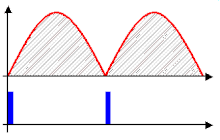ipinimo
Junior Member level 1

hi all,
am working on 300watt inverter which i intend to use 1 transformer for charging the battery and do the inverter work
the inverter is a sinewave type 12v to 230v
the transformer rating is 8v to 230v 300watt
i am using H-bridge for driving the transformer
i think it should be possible to charge the 12v battery with this 8v transformer either by using smps or somthing else
i want to ask, is it possible to use this transformer to charge the battery with the 8v output,
if yes how can i go about it
am working on 300watt inverter which i intend to use 1 transformer for charging the battery and do the inverter work
the inverter is a sinewave type 12v to 230v
the transformer rating is 8v to 230v 300watt
i am using H-bridge for driving the transformer
i think it should be possible to charge the 12v battery with this 8v transformer either by using smps or somthing else
i want to ask, is it possible to use this transformer to charge the battery with the 8v output,
if yes how can i go about it

